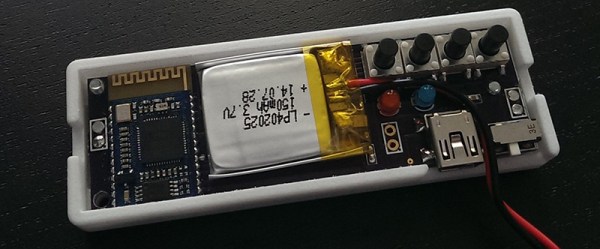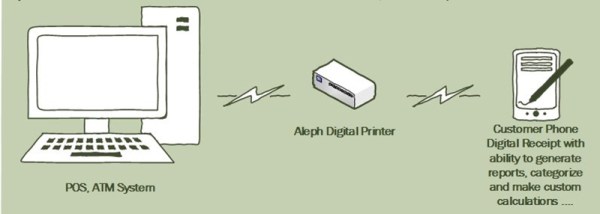There’s Apple Pay, Samsung Pay, Google Wallet, and a host of other ways to pay for stuff with your phone. What about receipts, though? Do you really need to carry around little bits of paper to prove to incredulous friends you have, indeed, bought a donut? The proof is back home, in the file. Under D, for donut.
[Hisham] is working on a very interesting system for the Hackaday Prize. It’s effectively the the opposite side of every point of sale transaction that Apple Pay, Samsung Pay, and Google Wallet are working on. Instead of handling payment, [Hisham]’s Aelph handles receipts.
[Hisham]’s project is hardware, with a small device that plugs into a point of sale terminal. This device transmits a receipt to the Aleph app (or a third party app), and uploads a PDF copy of the receipt to a server. Other than a small hardware box, there’s no additional software required for a POS terminal. For retailers, it’s as easy as plugging in a box, and for consumers, it’s as easy as downloading an app.
The hardware was prototyped on a TI LaunchPad featuring a TIVA C microcontroller. This, along with the NFC eval kit give Aleph more than enough power to connect to a company LAN and spit out a few PDFs. You can check out one of [Hisham]’s demo videos below.
There are a lot of benefits to a electronic receipts; if you ever need a receipt, odds are you’ll scan it anyway – a dead tree receipt is just inefficient. There’s also some nasty chemicals in thermal receipt paper. You only need to Google ‘BPA receipt’ for that evidence. Either way, it’s a great idea, and we long for the day that our wallets aren’t stuffed to Costanzaesque proportions, and a time where we won’t need a scanner to complete an expense report.
Continue reading “Hackaday Prize Entry: It’s Like Apple Pay, But For Receipts” →
 While we have your attention, here’s another reminder to head on over and Vote in Astronaut or Not. Each week we draw a random hacker number for a $1000 giveaway, but only if you have voted!. The next drawing is TODAY so get at least one vote in right away to qualify.
While we have your attention, here’s another reminder to head on over and Vote in Astronaut or Not. Each week we draw a random hacker number for a $1000 giveaway, but only if you have voted!. The next drawing is TODAY so get at least one vote in right away to qualify.





























